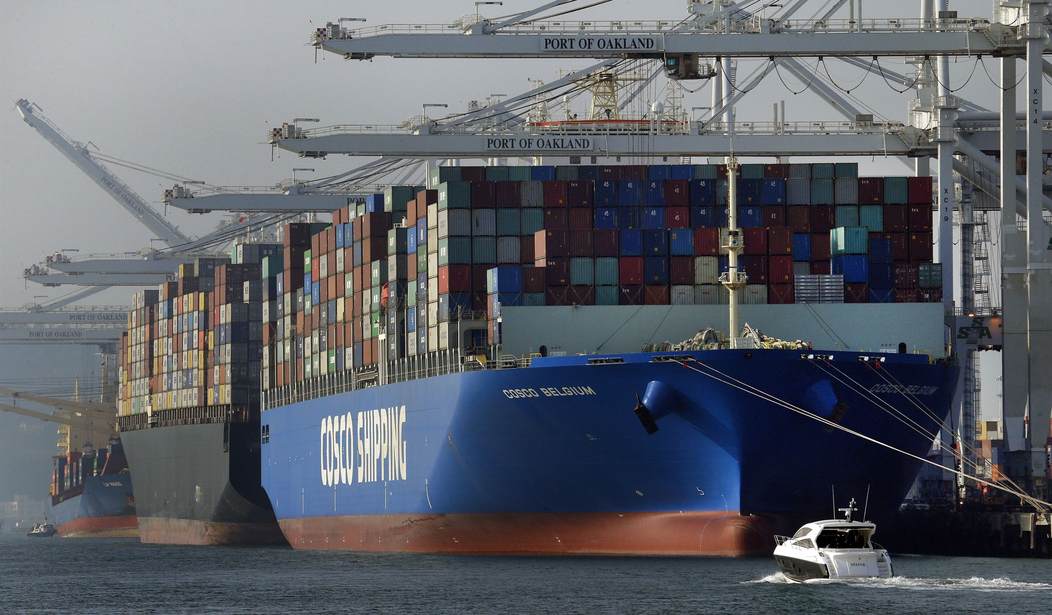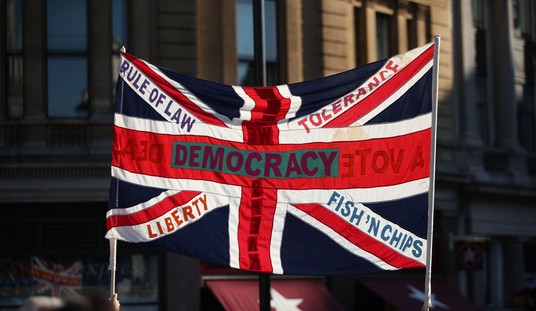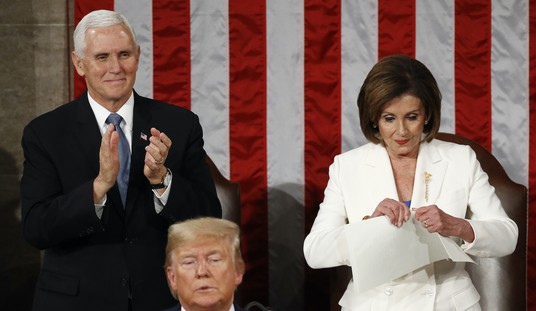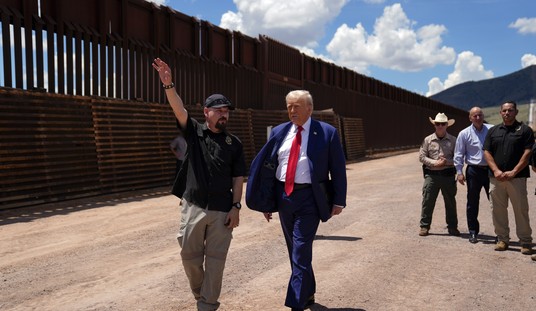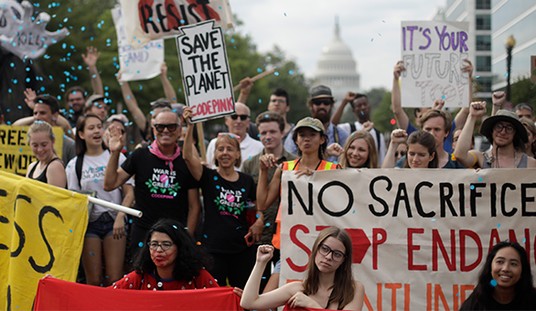The Chinese plague is already adversely impacting global commerce and economies around the world. For decades, the globalists have been hard at work facilitating the establishment of global supply chains that have leveraged the “cheap labor” in developing countries like Communist China, India, Bangladesh, and Vietnam. Those supply chains involve transportation of finished products, automotive parts and assemblies, computers and hand-held devices, drug precursors, rare earth minerals vital for industrial production, oil and gas, etc., etc. The rapid spread of the plague to hubs of China’s Maritime Silk Road – and elsewhere – has greatly disrupted those supply chains and the world economy in particular. We are only at the front end of that disruption, unfortunately.
There are several disturbing signs of the global slowdown that has been underway over the past month. One clear indication is the significant drop in air pollution in China since the outbreak of the plague, as reported by Reuters:
Air pollution from nitrogen dioxide, a gas emitted by cars, power plants and factories, fell by 40% over Chinese cities due to temporary restrictions put in place to contain the coronavirus outbreak, a satellite animation showed on Thursday.
The latest imagery here from the European Space Agency offers an eye-in-the-sky picture of the impact on pollution in China as authorities moved to clear streets and close factories in January – before activity began to resume in March.
“We currently see around a 40% reduction (in nitrogen dioxide levels) over Chinese cities, however these are just rough estimates, as weather also has an impact on emissions,” Claus Zehner, who manages the space agency’s Copernicus Sentinel-5P satellite mission, said in a statement.
Chinese manufacturing ground to a virtual halt, doing great damage to the fragile command-driven Chinese economy. It is no surprise that the ChiComs are now spreading false propaganda that they have managed to contain the virus, and that new cases of the virus in China “are decreasing” in recent days. Given their lies and prevarications concerning the virus’s origins and attempts to falsely shift blame to other countries, I don’t believe those reports to be true. More likely, they are intended for domestic consumption in order to get their people to work and factories running again. They face an economic catastrophe if they delay jump-starting their industries.
Italy is the major European hub of China’s Maritime Silk Road, and it is thus no surprise that satellite photos have also shown a dramatic improvement in air quality there, too (also an indication of a major economic slowdown).
As the world scrambles to confront the disease caused by a novel coronavirus, Italy has been forced to take such dramatic measures that the country’s emissions have changed, as seen from space.
That’s on display in a new video produced by the European Space Agency (ESA) using data gathered by the agency’s Copernicus Sentinel-5P satellite. That spacecraft tracks air pollution in the atmosphere, and the satellite has seen a sharp decrease in emissions of nitrogen dioxide over Italy during the first two and a half months of 2020. The Italian prime minister ordered northern Italy into a lockdown on Sunday (March 8) to try to contain the disease.
Perhaps an even bigger indication of the worldwide economic slowdown has been the dramatic downturn in container shipping – probably the worst in history, as reported here.
As the retail industry across Europe and North America begins to effectively shut down as governments enforce widespread social lockdown, there are increasing warnings that the container shipping industry is set to see some of the largest declines in volumes in living memory.
According to liner analyst SeaIntelligence Consulting, the possibility of a 10% decline in global container shipments – which would equate to 17m teu carried by the world’s box shipping fleet and some 80 teu handled in global container ports – has “unfortunately moved closer to reality”.
SeaIntelligence Consulting chief executive Alan Murphy said: “We also have US business inventories being 10% larger than just before the financial crisis, when they are compared to the magnitude of sales – and during the financial crisis, inventories were reduced by 18%.
“On top of that, we are seeing restrictions in ports, a few even banning vessels if they have been in virus-afflicted countries or shutting down temporarily when they find workers who have tested positive for the virus,” he added.
Next comes some perspective from one of my pals who is a keen observer of economics, geopolitics, and military affairs. His comments may resonate with you just as they did with me:
This is the deepest dip in merchant shipping since World War-II and a sign of a deepening worldwide recession – maybe even a looming depression. However, once the specific health pandemic causes are addressed and cured/controlled, the US and world economies should rebound quickly and sharply – provided governments do not implement growth-killing policies. It will be a tough six-to-eighteen months ahead.
The key short-term criterion will be the development and mass distribution of effective drugs that can treat the virus. The key long-term recovery criterion will be the development of an effective plague vaccine that will be available for billions of people and protect them from a recrudescence of this virus and its spawn.
It appears that international commercial freight and passenger air traffic is also cratering and will remain way down for a long time to come.
My greatest concern is that this pandemic has demonstrated a clear pathway to China, Russia, rogues states like Iran and North Korea (and perhaps even Venezuela and Cuba), and non-state terrorist groups how in the future they could attack, weaken, and possibly destroy the United States with very little investment or technological requirements. That is, through the use of viral or bacterial biological warfare.
Imagine the scenario in which a fanatical jihadi – instead of putting on an explosive suicide vest and blowing himself up at a U.S. military base or airport – is injected by his handlers with an extremely contagious and lethal virus or bacillus, carrying a sickness that has an incubation period of 24 to 96 hours. He is then given an airline ticket to New York, LA, San Francisco, or Washington DC. He arrives in the US completely asymptomatic and clears customs and medical screenings at the airport, and then takes a taxi and disappears into urban America, making physical and aerosol contact with as many Americans as he/she can. Now imagine that happening simultaneously with a half-dozen or more fanatics, and you have a pandemic on the cheap. The possibilities and potential outcomes are frightening to contemplate.
We have always feared this sort of asymmetric contingency in planning for defense of the homeland, but the Wuhan virus pandemic has filled in many of the specifics that the bad guys would need in order to better execute such a fiendish attack plan. This pandemic also has helped them identify critical nodes and infrastructure to target that would enhance the physical and psychological impact of a bio-warfare attack on the US.
Let’s face it: we have entered uncharted territory, and perhaps stand at the precipice of a vulnerability-prone new Dark Ages.
Perhaps a bit overdramatic, but his speculation is in keeping with the times and certainly in line with my own thoughts on the subject!
What can we expect the future to hold, economically-speaking? There is a lot of speculation ongoing in that regard, and I will add my two cents as well.
To start with, the US economy will likely shift into a recession despite the stimulus bill(s) that will eventually be signed into law. The near-term disruption, including the temporary lockdowns in many states and job losses, will be too profound to prevent that from happening. There is a danger that the American psyche will be damaged by this plague, and that would do long-term damage to the resiliency of the US economy and substantially delay any bounce-back in the stock market. Since we’ve been in a constant growth economy that was accelerated by President Trump’s policies, there are those who argue that “the market” has been looking for a reason for a major correction, and that plays into the crisis as well. (The Democrat-media complex has been trying to talk the economy into a recession for the last two years at least and has finally gotten their wish due to unforeseen circumstances.)
The Chinese are already severely impacted, and that has slowed down their importation of raw materials for their manufacturing facilities, with a ripple effect on the global supply chains noted above, as well as a dramatic decrease of container ships on the back end. That hit combined with the US slowdown will depress the world’s economy to potentially negative GDP growth for the year.
It will likely take at least six months after the virus is truly controlled/contained for the global supply chains to recover. Some of those supply chains will be drastically shifted, as the US (and potentially other countries) seek to re-patriot manufacturing and production capabilities from China to their homelands.
Lastly, the real silver lining in this crisis is the historically-depressed oil and gas prices that have been brought about by the US fracking industry and subsequently the OPEC/Saudi production war with Russia that fortuitously started as the virus began to spread around the world. Inexpensive energy prices are vital in keeping the world economy on an even keel in these troubling times, as every industry is impacted by the cost of energy. We are extremely fortunate to have Arab Extra Light (Saudi Arabia) oil trading at $25.50 per barrel. That’s a shot in the arm for a weakened global economy.
There are some tough times ahead. Optimism is the best solution in even the worst of times – for psychological reasons as much as anything.
The end.

